11 Worst Bugs in Dallas, TX (and How to Get Rid of Them)
BY KIMBERLY MAGERL | JUNE 18TH, 2019 | DALLAS, LAWN CARE, PESTS AND DISEASES, TEXAS, ZONE 8ATexas is one of the most bug-diverse locations in the U.S. and home to almost 30,000 species of insects. Thanks to “Big D’s’ subtropical climate, 40 inches of annual rain, and average daily temperatures around 78 degrees Fahrenheit, the Metroplex is a bug’s paradise. We compiled a list of the 11 worst bugs in Dallas, including tips on how to get rid of them.
In this article, we’ll cover:
- Why are Bugs Bad for Your Dallas Lawn?
- Ways to Control Bugs on Your Dallas Lawn
- 11 Worst Bugs in Dallas
- Acrobat Ants
- Bed Bugs
- Carpenter Ants
- Chinch Bugs
- Cockroaches
- Fire Ants
- Fleas
- Mosquitoes
- Spiders
- Termites
- Wasps
Why are Bugs Bad for Your Dallas Yard?
Insects are vital to the well-being of our ecosystems. Unfortunately, that does not mean we want them in our homes or infesting our garden plants. While many insects are beneficial or neutral, some species are destructive and should be controlled.
Here are some reasons why pest control is important:
- Pest control protects your health and food supply.
- Insects and rodents carry venom, bacteria, and diseases including West Nile virus, Lyme disease, encephalitis, and salmonellosis.
- Pests contain allergens, triggering asthma attacks and respiratory conditions.
- Some insects destroy structures causing instability.
- Some pests cause painful bites and stings.
Ways to Control Bugs on Your Dallas Yard
There are two ways to control pests in your lawn and around your home: chemical treatments and organic methods. Organic methods are the safest treatment options, but these methods aren’t always the best and many are ineffective. Be sure to identify the type of pest you are dealing with before selecting your removal method.
It is always advisable to hire a professional pest control company to perform quarterly treatments inside and outside of your home. These methods are the safest and most effective for your family and pets.
Organic Treatment Options
Experts agree home pest control is necessary, and many Dallas-Fort Worth critters can be prevented. Organic pest control has come a long way and is safer than chemical treatment options for your pets and children. However, it is also typically less effective.
Check out some available organic pest control options:
- Pyrethrin: This plant-based insecticide deters many pests with its scent, killing on contact.
- Neem oil: Use this tree-derived poison to inhibit the growth cycles of insects and limit their populations.
- Spinosad: Spray this natural bacteria on plants, including fruits and vegetables to kill insects.
- Diatomaceous earth: This dry pest control method made from algae kills pests on contact. Unfortunately, it affects beneficial insects like butterflies, honey bees, and ladybugs.
- Heat treatment: Professional pest control method for fleas, bed bugs, and other large infestations.
Pest Control Chemical Treatments
Chemical pest control treatments are more effective than organic techniques. They control rodents and insects, stopping the spread of dangerous bacteria and diseases.
Some popular chemical treatments include:
- Granulated insecticide: Sprinkle this fast-acting insecticide near nests and scavengers’ food sources.
- Repellent pesticide: Fast-acting insecticides that kill on contact and disrupt pheromone trails.
- Non-repellent pesticide: Slow-acting insecticides that cross over surfaces, infesting nests and maintaining pheromone trails for maximum effectiveness.
- Bait: Bait with integrated traps works for indoor and outdoor pest control to attract and trap insects and rodents.
- Rodenticide: High-toxicity pesticides designed to kill rodents. These are best left to professionals. They kill rats, mice, squirrels, and other small animals, including dogs and cats.
- Fogging: Also known as bug bombs, foggers release aerosolized propellant insecticides to fumigate a contained area.
11 Worst Bugs in Dallas
1. Acrobat Ants (Crematogaster ashmeadi)
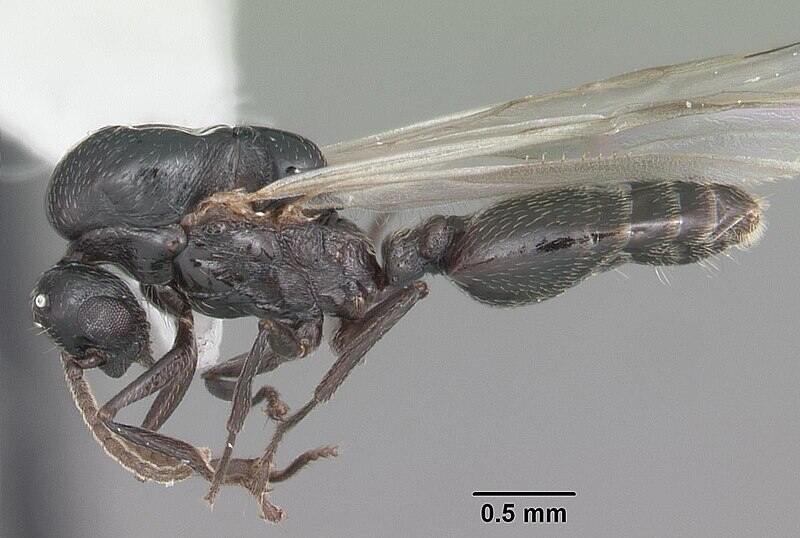
Photo Credit: April Nobile / Wikimedia Commons / CC BY 4.0
What Are Acrobat Ants?
Unfortunately, acrobat ants stray far from the circus into your Dallas yard. These reddish-brown and black ants grow to ⅛ inch and have distinctive, heart-shaped abdomens. They emit an odor when threatened and raise their abdomen over their head in a feat of acrobatics. Omnivorous colonies of a few thousand members eat honeydew from aphids, dead or living insects, and mealybugs.
Signs of an Acrobat Ant Infestation
Acrobat ants rarely nest in the open or enter homes. They love moisture and live under rocks, logs, trees, and wood piles. The most obvious sign of an infestation is an ant trail. These foragers travel up to 100 feet from their nest in search of resources.
How to Prevent Acrobat Ants
The easiest way to prevent these moisture-loving pests is to eliminate sources of standing water, keep your yard clear of fallen branches and logs, and store firewood at least 5 inches from the ground.
How to Eliminate Acrobat Ants
If you are unlucky and find these predatory ants around your home, opt for a foam insecticide sprayed directly on the nest indoors or a non-repellent pesticide outdoors.
Insect type: Crematogaster
Habitat: Moist areas under rocks, logs, trees, or wood piles
Danger: Low; emit an odor when threatened, occasionally bites when disturbed
Removal: Repellent and non-repellent pesticides
2. Bed Bugs (Cimicidae)
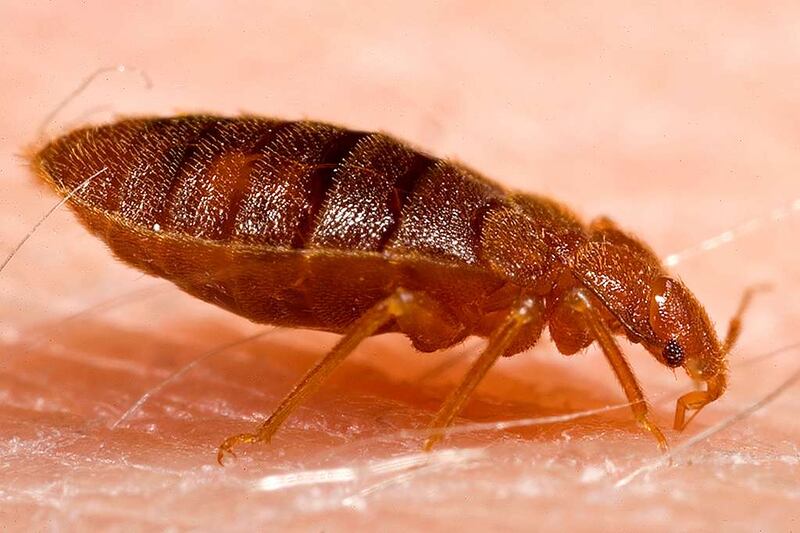
Photo Credit: Picryl
What Are Bed Bugs?
Few bugs make your skin crawl by mere mention like bed bugs. These indoor vampiric pests are small and brownish-red with flat, oval-shaped bodies and six legs. They grow to ¼ inch and feed on blood, preferably human blood.
Signs of a Bed Bug Infestation
These pests are hitchhikers and have no environmental preferences aside from the presence of humans. Bed bugs enter your home through clothes, belongings, and luggage. They are nocturnal and most active from April to November, hiding in mattresses, box springs, baseboards, and outlets.
How to Prevent Bed Bugs
Prevent bed bugs by keeping your luggage and personal belongings off the ground while traveling. Do not purchase used furniture or mattresses and wash used clothing immediately.
How to Eliminate Bed Bugs
If you suspect bed bugs have infested your home, contact a local exterminator. Professional removal is the best way to eradicate a bed bug infestation, and many experts rely on organic heat treatments.
Insect type: Cimicidae
Habitat: Anywhere where humans live
Danger: Low; but can cause red rashes that can lead to secondary infections in some people
Removal: Professional pest control services, including heat treatments
3. Carpenter Ants (Camponotus)
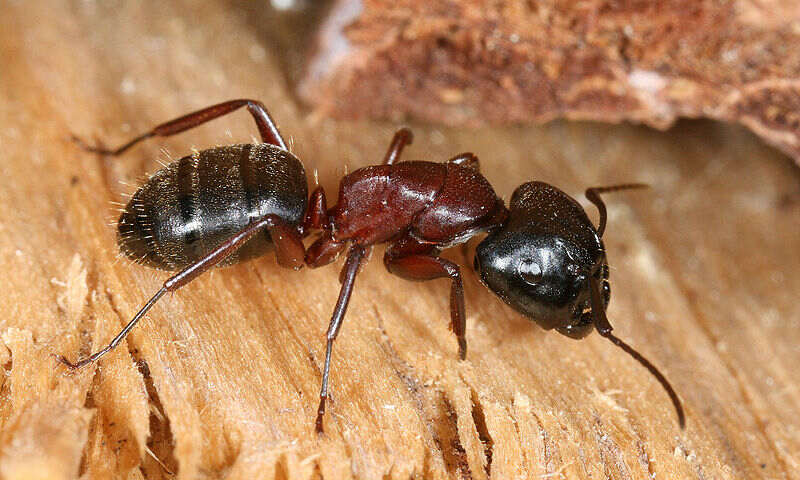
Photo Credit: Richard Bartz / Wikimedia Commons / CC BY-SA 2.5
What Are Carpenter Ants?
There are 14 species of carpenter ants in Texas, and the largest species is the black carpenter ant. Thankfully, these pests prefer wooded outdoor areas, including old stumps, decaying logs, and firewood. Carpenter ants are brown-red with black abdomens and reach up to 1⁄2 inch long.
Signs of a Carpenter Ant Infestation
These ants can cause structural damage to homes, though it is rare. You may find them between wood shingles, siding, or fascia boards. Identify carpenter ant tunnels and nests by looking for sawdust near openings. Like acrobat ants, these omnivores forage for decaying fruits, honeydew from aphids, and live or dead insects.
How to Prevent Carpenter Ants
Prevent carpenter ants by eliminating moisture problems and sealing cracks or openings near your foundation. Remove dead branches and trim trees away from structures.
How to Eliminate Carpenter Ants
Carpenter ants have chewing mouthparts and stingers. They can bite but do not sting. Remove them from your home by using a propellant foam insecticide. Similarly, use a pyrethroid insecticide outdoors to eliminate the nest and trails.
Insect type: Camponotus
Habitat: Dead or decaying wood, stumps, logs, or weakened building materials
Danger: Moderate; bites when disturbed, causes structural damage to wood
Removal: Repellent and non-repellent pesticides
4. Chinch Bugs (Blissus leucopterus)
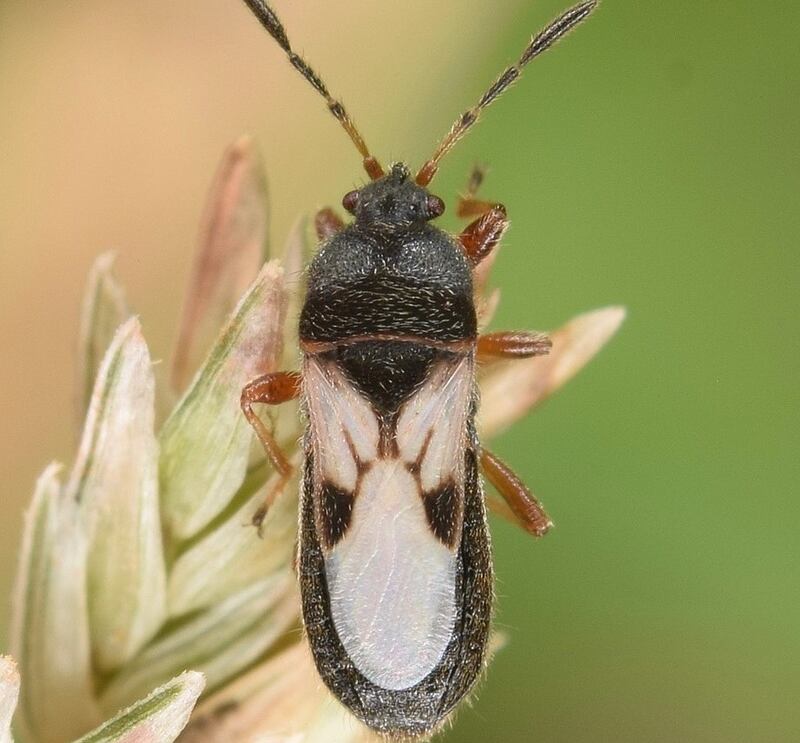
Photo Credit: Christina Butler / Wikimedia Commons / CC BY 2.0
What Are Chinch Bugs?
Chinch bugs are 3/16 inch long with black bodies and white wings. They feed on the sap of grasses, commonly occurring in bunch grasses and Dallas turfgrasses, including bermudagrass and St. Augustinegrass.
Signs of Chinch Bug Infestation
Watch for round, localized yellow or brown spots in your yard, typically from July to August.
How to Prevent Chinch Bugs
Unfortunately, chinch bugs are drawn to heat, sun, and warm-season grasses. Your best defense against these nuisance pests is proper lawn maintenance, including watering, mowing, and fertilizing.
How to Eliminate Chinch Bugs
DIY collect chinch bugs using a coffee can with both ends removed to create a hollow pipe. Insert the can into the soil inside the affected area. Fill the can with water and leave it for a few days. Chinch bugs will float to the top of the can for removal. Additionally, use a granular insecticide for lawn pests.
Insect type: Blissus leucopterus
Habitat: Bunch grasses and turfgrasses, including bermudagrass and St. Augustinegrass
Danger: Low; medically harmless but capable of injuring plants and turfgrass
Removal: Granular lawn pesticide or coffee can method
5. Cockroaches (Periplaneta)
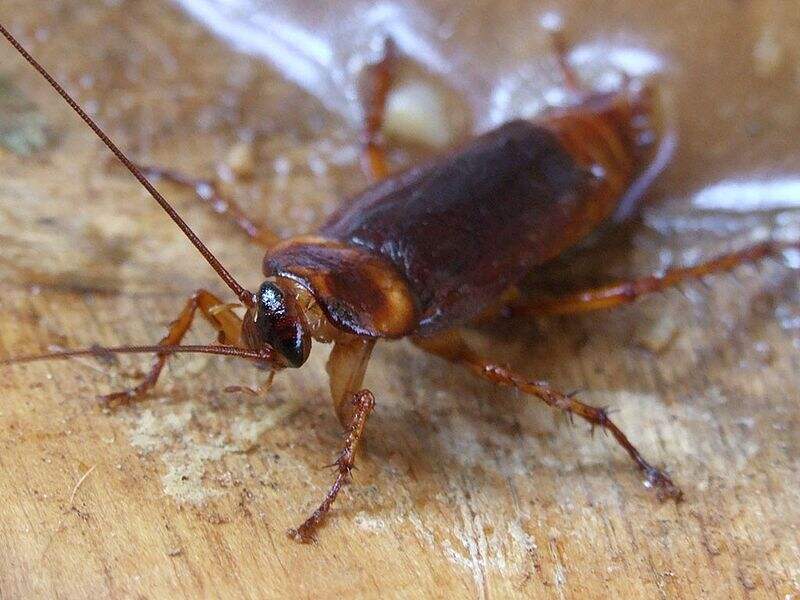
Photo Credit: Eran Finkle / Wikimedia Commons / CC BY-SA 3.0
What Are Cockroaches?
You can find cockroaches all over the world, and Dallas is no exception. Home to the American cockroach, German cockroach, and oriental cockroach, these pests have a thick shell of armor covering their oval bodies, six legs, and two long antennae. Both the American and German cockroach species have fully developed wings for flying.
Signs of a Cockroach Infestation
Cockroaches love moisture, including drains, flower beds, and mulch. They seek shelter indoors during bad weather, hiding in laundry rooms, bathrooms, kitchens, and basements. These nuisance pests spread disease, contaminate food, emit odors, worsen allergies, and even trigger asthma attacks.
How to Prevent Cockroaches
Prevent cockroaches around your home and yard by creating a barrier between your home and mulched beds, locking your outdoor trash can lids, sealing foundation gaps, and eliminating standing water. Keep living areas clean and vacuumed and use dehumidifiers to reduce humidity levels.
How to Eliminate Cockroaches
Glue traps, bait stations, and repellent pesticides are the best indoor removal methods while you can use non-repellent pesticides outdoors around your lawn.
Insect type: Periplaneta
Habitat: Moist areas; drains, flower beds, mulch, laundry rooms, basements, kitchens, and bathrooms
Danger: High; carry diseases, contaminate food, emit odors, and trigger allergies and asthma attacks
Removal: Glue traps, bait stations, and repellent and non-repellent pesticides
6. Fire Ants (Solenopsis)
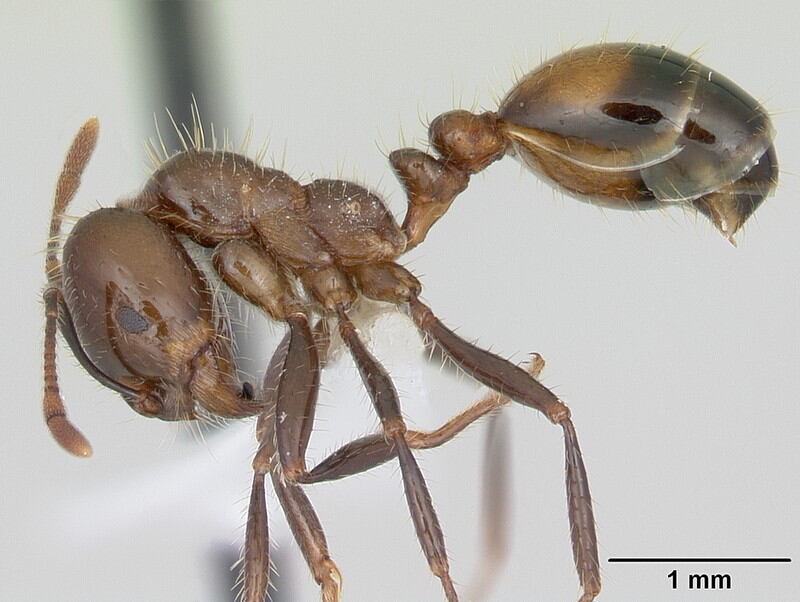
Photo Credit: Animal Diversity Web / Flickr / CC BY 2.0
What Are Fire Ants?
Fire ants are as menacing as they sound. These reddish-brown insects are only ⅜ inch long with powerful jaws that deliver painful bites and stringers full of venom. Fire ants are aggressive and a year-round problem in the DFW area. Like carpenter and acrobat ants, they are omnivorous, eating fruit, meat, insects, earthworms, compost, outdoor pet food, and trash.
Signs of a Fire Ant Infestation
Fire ants thrive in sunny areas and open spaces. Thankfully, their nests are easy to spot on your lawn as these insects create distinct granular mounds up to 4 feet in size.
How to Prevent Fire Ants
Prevent fire ants by covering trash cans and treating at the first signs of infestation. It is important to maintain a proper watering schedule, ensuring you do not overwater your lawn.
How to Eliminate Fire Ants
There is no best control method for fire ants. You can use non-repellent pesticides or granular treatments.
Insect type: Solenopsis
Habitat: Sunny, open areas
Danger: High; deliver painful bites but rarely sting
Removal: Non-repellent pesticides and granular treatments
7. Fleas (Siphonaptera)
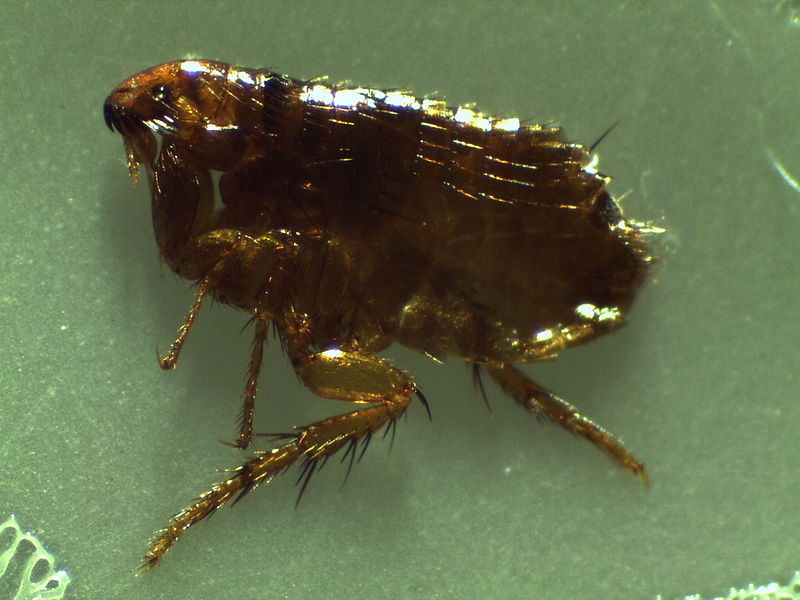
Photo Credit: Erturac / Wikimedia Commons / CC BY-SA 3.0
What Are Fleas?
Fleas are extremely common in Dallas, usually living on your furry animal friend. These tiny, wingless insects are dark brown and the size of a speck of dirt. There are more than 300 species of fleas, and each flea can produce around 500 offspring in its lifetime.
Signs of a Flea Infestation
Fleas enter your yard on the coats of wild animals and quickly jump from pet to human before making their way into your home. They also can find their way into your home through used furniture and clothing, but thankfully, fleas are mainly outdoor pests. These insects love tall grass, debris piles, and bushes.
How to Prevent Fleas
Prevent fleas by grooming your pets, using year-round veterinary flea control, and keeping your lawn maintained. Trim bushes and shrubs and keep bird feeders away from your property.
How to Eliminate Fleas
The best removal method for fleas is propellant insecticide. Alternatively, topical and oral prescriptions, flea shampoo, and pet-safe sprays are available for pet infestations.
Insect type: Siphonaptera
Habitat: Moist, shady areas
Danger: High; bites transmit diseases such as murine typhus, tularemia, and tungiasis
Removal: Propellant pesticides
8. Mosquitoes (Culicidae)
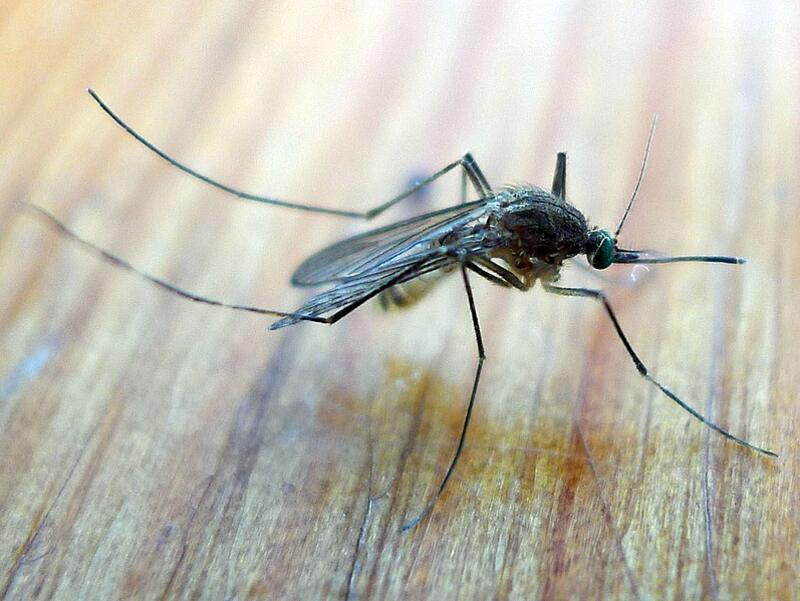
Photo Credit: Gailhampshire / Wikimedia Commons / CC BY 2.0
What Are Mosquitoes?
Mosquitoes love Dallas’ subtropical climate. These biting insects have oval-shaped bodies, long legs, and wings. They are brownish black and females feed on human and animal blood, but the mosquito’s primary food source is plant nectar.
Signs of Mosquito Infestation
Mosquitoes cause itchy red bumps and spread diseases like Zika virus, encephalitis, and West Nile virus.
How to Prevent Mosquitoes
Prevent these pests by eliminating standing water and food sources. They thrive in moist areas with a lot of flowering vegetation, including ponds, wooded areas, and near swimming pools. Limit flowering plants near your home and maintain proper yard drainage to eliminate standing water.
How to Eliminate Mosquitoes
Perform routine yard maintenance, cutting back overgrown vegetation. Professional pest control plans often offer add-on outdoor mosquito control. Additionally, use non-repellent insecticides to help maintain a mosquito-free yard.
Insect type: Culicidae
Habitat: Moist, high-vegetation areas such as forests, ponds, and tall grasses
Danger: High; female bites transmit diseases such as West Nile virus, encephalitis, and Zika virus
Removal: Non-repellent pesticides
9. Spiders (Araneae)
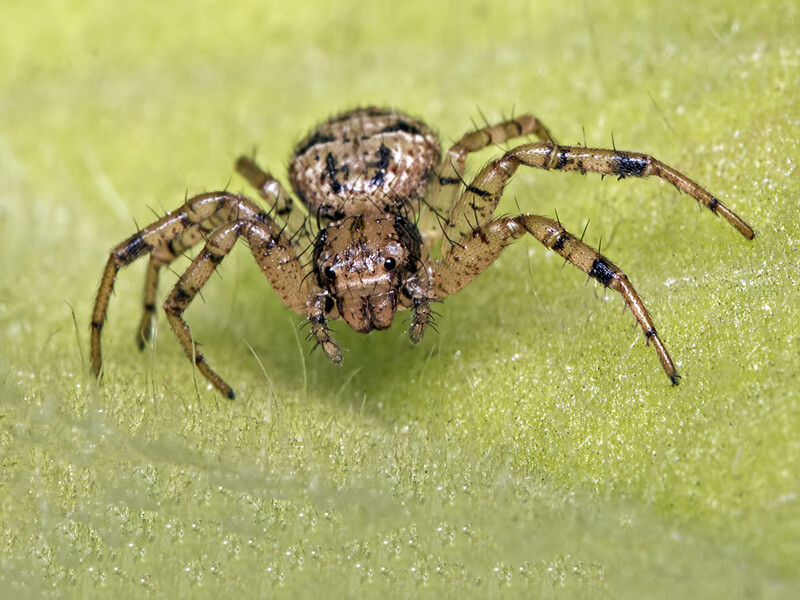
Photo Credit: Pxhere
What Are Spiders?
Spiders catch a bad rap for being scary. These beneficial arachnids are vital to the ecosystem. They have eight legs and two distinct body regions. The most common species found in the Metroplex are black widows, brown recluses, and wolf spiders.
Signs of a Spider Infestation
Most spider species are not a direct threat to humans. However, the brown recluse and black widow spiders are venomous. Their bites can cause serious reactions in some people.
If you notice webs and have a spider infestation in your yard, it is a signal you have a larger underlying infestation. Spiders move into an area where large populations of insects live and love secluded areas to hide, like garden sheds, tall grasses, covered porches, basements, garages, and crawl spaces.
How to Prevent Spiders
Prevent spiders by eliminating hiding places, maintaining your lawn, and reducing the number of smaller pests in your yard.
How to Eliminate Spiders
Knock out an indoor infestation with a repellent pesticide or use a non-repellent pesticide outdoors.
Insect type: Araneae
Habitat: Adaptable; seek shelters and areas to hide
Danger: Moderate; venomous spiders can cause allergic reactions in some people
Removal: Repellent and non-repellent pesticides
10. Termites (Isoptera)
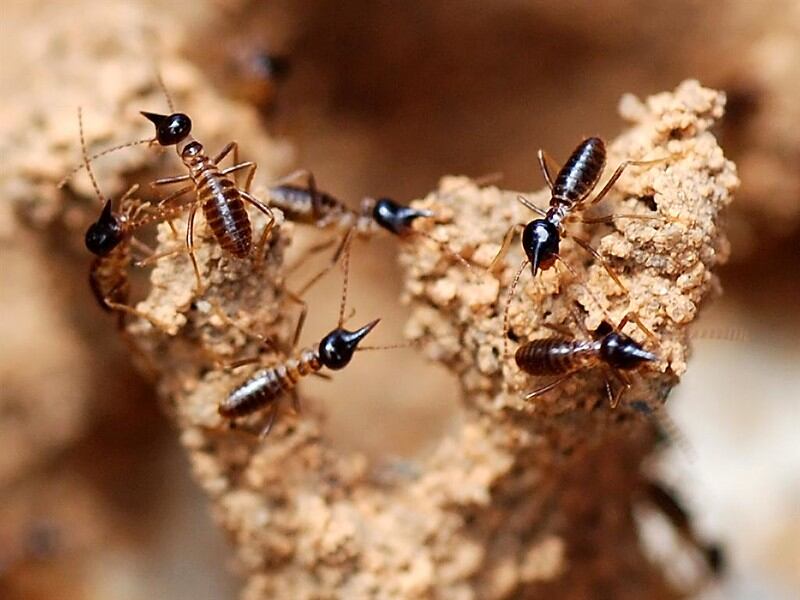
Photo Credit: Jean and Fred Hort / Flickr / CC BY 2.0
What Are Termites?
Termites are beneficial insects in nature. However, once these wood-chomping social insects wander indoors or near homes, they pose a serious problem. Termites live in large colonies. They are cream, yellow, or brown with elongated bodies and enormous jaws.
Signs of a Termite Infestation
Termites can cause severe structural damage if left untreated, and unfortunately, most homeowners’ insurance does not cover termite damage. These insects love moist areas such as leaking pipes, basements, foundations, and beneath decks.
How to Prevent and Eliminate Termites
The best termite prevention and control is to hire a pest control expert. A routine termite inspection and prevention plan offers peace of mind. If your termite infestation is isolated and contained to the outdoors, you can opt for a DIY solution using a termiticide, a pesticide designed specifically for termites.
Insect type: Isoptera
Habitat: Dark, moist areas with minimal air exposure
Danger: Moderate; cause structural damage
Removal: Professional pest control and termiticide
11. Wasps (Vespidae)
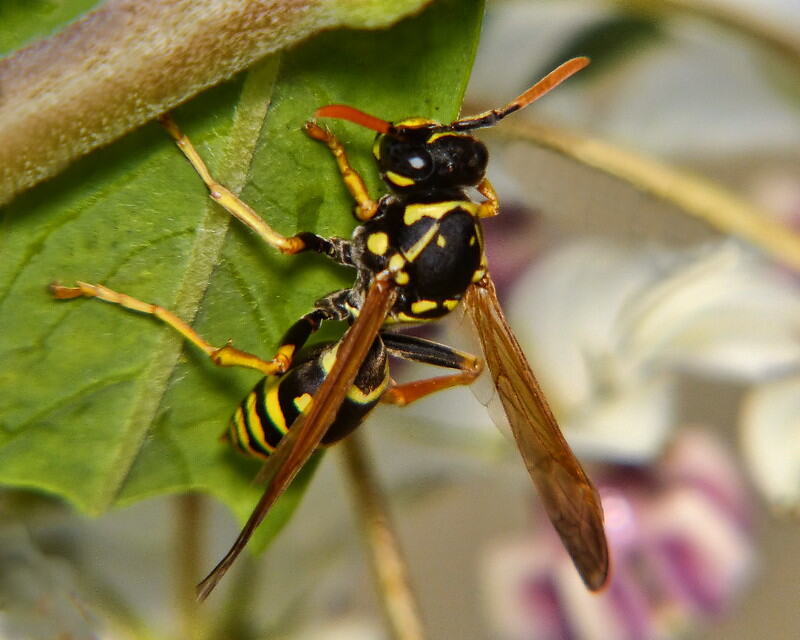
Photo Credit: Sid Mosdell / Flickr / CC BY 2.0
What Are Wasps?
Wasps help control insect populations and help pollination. The most common wasp in the Dallas Fort Worth area is paper wasps, recognizable for their pinched waists and long legs. They are black or brown with bright yellow markings and gray wings.
Signs of a Wasp Infestation
Paper wasps are aggressive if their nests are threatened. They are venomous, and some people develop allergic reactions to their stings. These insects are adaptable, forming nests in shrubs, trees, windows, door frames, and overhangs.
How to Prevent Wasps
Prevent wasps by properly sealing garbage cans and eliminating food sources around your entrances.
How to Eliminate Wasps
Use a repellent insecticide to treat infestations. When you are certain all residents are dead, scrape and remove the nest left behind.
Insect type: Vespidae
Habitat: Adaptable; form nests in shrubs, trees, door and window frames, and overhangs
Danger: High; deliver painful and venomous stings that can cause allergic reactions in some people
Removal: Repellent pesticide
FAQ About the Worst Bugs in Dallas
The mild year-round weather is one of the most attractive things about Texas. Unfortunately, bugs love the subtropical climate as much as humans. Experts recommend quarterly pest control treatments for preventative maintenance.
No, bed bugs are extremely hard to exterminate completely once they have made their way into your home. Treatment requires specialized equipment and training. Your best hope of complete eradication starts by calling a professional in your area for a free quote.
Typically, pest control companies offer separate rodent services. Some companies offer a specialized rodent control and prevention program.
Professional Pest Control for Your Dallas Home and Landscape
Pests are creepy, crawly nuisances that will inevitably pop up in your home or yard. The best defense against an invasion is routine lawn maintenance and a pest control prevention plan. There are many low-maintenance landscaping options available for Dallas, and be sure to check out our list of the best native plants that will thrive in your Texas landscape.
If you need some help to control a pest invasion, contact a Dallas exterminator today to keep your family and lawn healthy year-round.
Main Image Credit: Wasp sitting on green leaf / Pexels